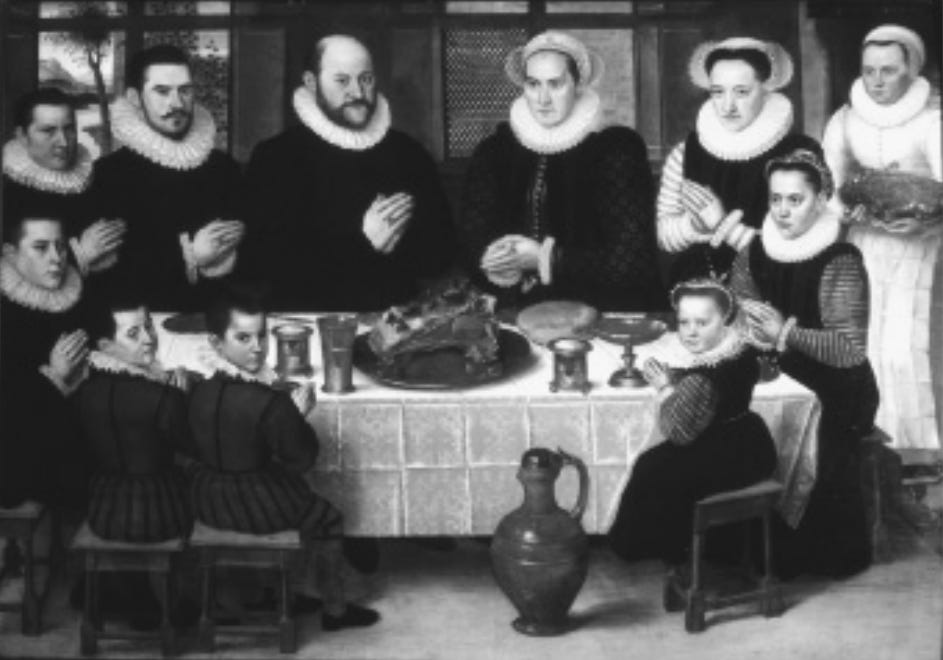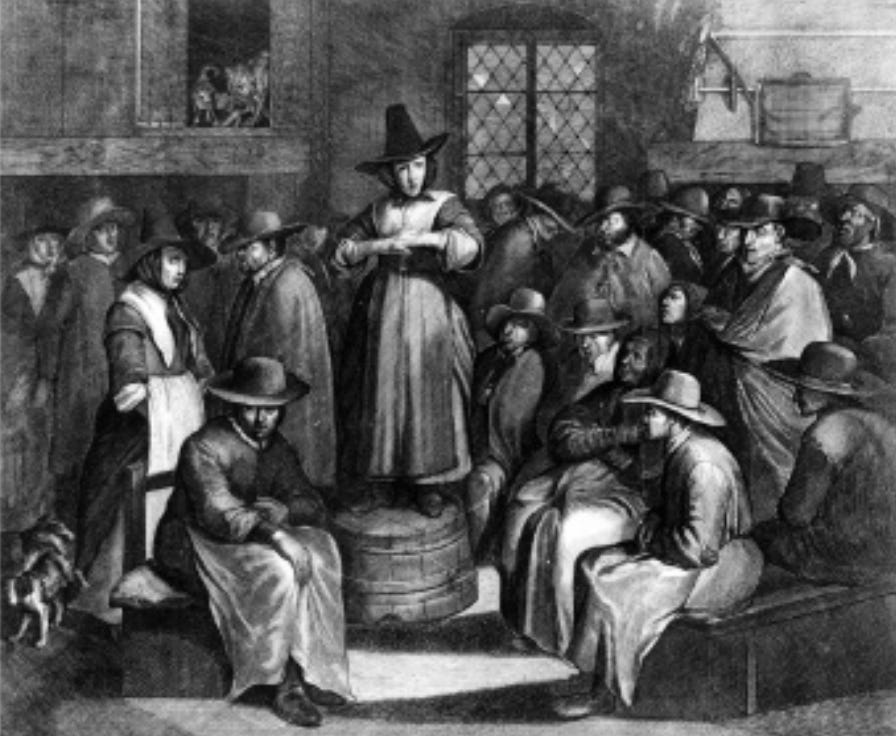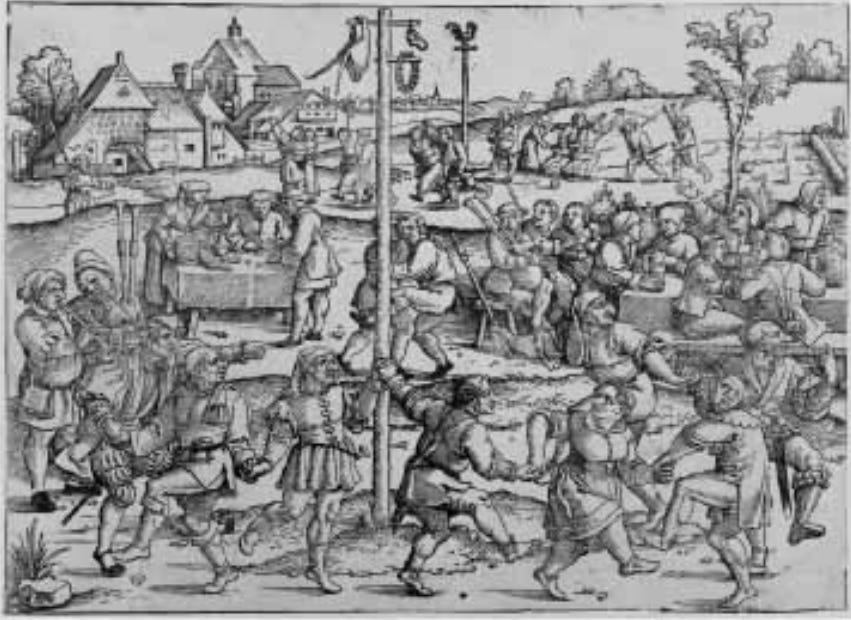第四章:社会变动
原书及其作者:牛津通识读本系列丛书,或者“A Very Short Introduction series”,一个非常高质量的学科入门读本系列。16到17世纪左右,这段宗教改革的故事从近乎偏执于原教旨的圣经解读出发,最终却落在了催生多元社会的终点上。
系列上一篇:Politics | 政治影响
-----
Chapter 4 Society
>p76 From their perspective, human beings were fundamentally defined by their relationships to others, and by their place in social structures of various kinds.
这一点是当时天主教和新教的共识,当时的“宗教”和“社会”是如此的彼此不分,导致寻求宗教改革就是寻求每一个方面的社会纹理的改变,而改革本身也深深为这些纹理所塑造。
Structures of community
>p77 Investment in ‘community’ was not a lifestyle choice for pre-modern people, but a necessity of existence. Agriculture (the occupation of the great majority of the population) was a fundamentally collective exercise, in which all planted and ploughed according to agreed conventions, and brought in the harvest together. If the sustaining of life was a collective business, so were the principal threats to it: harvest failure, epidemic disease, extreme weather, war. These were often seen, in a phrase still embedded in the small print of insurance policies, as ‘acts of God’.
如果一个社会主要从事农业生产,人与人的社会形态必然是紧密相连的。
~ This made everybody’s behaviour everybody’s business, P77 ~
>p77-78 Here again, we see the strokes of the Reformation running along, rather than cutting against, the grain of late medieval religious culture. The principal block of both religious and social organization was the parish, a local administrative unit to which all who lived within its boundaries by definition belonged. The parish church was typically ‘community centre’ as well as place of worship, the only substantial collectively owned building and the site of communal festivity. Parishioners supported their local priest through the payment of tithes, a tax of 10% on all income and agricultural produce. In return, the priest was expected to supply pastoral care, and the sacraments, from baptism to extreme unction, which were essential keys to the doorway of salvation.
当时的社会生活以教区为单位自治,一个教区的教堂常常承载着社区中心的作用,教区的在地神职人员由乡里赋税养活,被期待提供服务和治理。这种治理是更高层次统筹社会的接口,这种服务是乡民接受宗教福音的门户。
所以被教会放逐是极其严重的惩罚,相当于在社会细胞之中“失格”。
新教对于当时的社会结构意不在横刀切断,新教在其控制区的基层治理也是运用教区系统施行的。
>p79-80 For Protestant reformers, giving to the poor was not a ‘good work’, there was no spiritual exchange of benefits, and no sense in which the poor particularly resembled Christ. Nonetheless, Protestant propaganda tended to castigate Catholics not for doing too much for the poor, but too little. …… This did not necessarily ‘secularize’ the issue in our sense of the term. Protestant poor relief was underpinned by ‘correct’ doctrine, and was part of building a genuinely Christian community. It was also accompanied by attempts to regulate, control, and reform the moral behaviour of the poor, requiring them to demonstrate a pious demeanour as a condition of support.
衡量一个社会的一大标准在于这个社会如何对待弱者。在贫困救济的议题上,天主教文化认为贫困是一种高洁的状态,倾向于浪漫化贫困和道德上规劝个人行慈善施舍。
天主教描述的图景中,施予者和贫困者直接仿佛存在一种散发着圣光的互动,但是新教的观念和这针锋相对。但他们不是反对济贫,而是提出了整个社会救济体系的系统性更新。
新教主张把天主教浪费在繁文缛节上的钱释放到社会领域中,停止浪漫化贫困,设置有合理优先级的支持机制,设立专门机构,并且重点把救贫济困的义务从教堂移给了国家(state)。核心理念是约束和治理。
>p80-81 Reformers rejected the idea of a separate clerical caste or estate, marked off by legal privileges, ritual celibacy, and such outward status markers as a shaved or ‘tonsured’ head. Priests were no longer the special channels of God’s grace through their unique ability to perform the miracle of the mass; Luther taught that ‘we are all equally priests’ through baptism, with clergy duties being no more than a function delegated to some members of the community.
高层次的社会治理理念需要稳定的人员系统,对于宗教改革的时代来讲,就是神职人员。路德的宗教改革从一开始就主张神职不应该成为一种特殊化阶层,因为在因信称义的观点下,普通教众和专门神职的地位是平等的。
>p81 It is characteristic of revolutions to have to rebuild what they have earlier torn down. Both secular and church authorities across the Lutheran and Reformed worlds soon realized that well-heeled and respected clergymen were vital instruments of religious instruction for the laity, and key agents of social discipline. The Protestant minister may not have possessed the mystique of the mass, or the charisma of the confessional, but he was expected to wield moral and religious authority in the community he served, principally in his role as preacher of the Word (Reformed pastors tended to sport full beards, like Old Testament prophets).
但是随着改革推进,改革也回头开始修复原先被自己一把撕掉的社会机制。世俗政权和改革教会都逐渐意识到,一支教养良好且受到尊敬信任的人力队伍,对于治理社会来说是相当重要的基础设施。
所以说起来,宗教改革年代的天主教和新教神职人员其实相同远远多过不同,但这并不妨碍当时不同派系教堂的任何细微差异都能带来十足的火药味。
宗教改革者的身份在逐渐从一个战天斗地打破所有旧物的革命者角色,逐渐转换成自己控制区域的治理者角色之后,许多社会治理实践就在吸取了天主教治理经验的基础上而改善。
Sexuality, women, and family
教士独身主义是天主教传统,而宗教改革者反对这一传统,并且认为日常中婚姻生活和信仰生活的地位多少是等同的。
宗教改革前的时代观念普遍认为孩子是天生坏心的,需要严厉管教,而宗教改革者主张应该关心和教养孩子。
 |
| P84 1885年Anthonius Claessins作,描绘一个宗教上理想的家庭秩序 |
宗教改革中,许多新教统治者关停修道院,使得女性追求灵性修行的人生轨迹被关闭,只能投入婚姻与家庭。
在宗教改革以前及以后的相当长时间里,女性一般是被认为不参与宗教与社会变革的角色,但实际上她们在宗教改革年代展现出了极强的政治参与度,并且也产生了许多各样的影响。
 |
| P88 Egbert van Heemskerk所作版画,描绘一个妇女在宗教集会上演讲的惊人画面 |
Culture wars?
~ A chapter on the reformation of society invites the question of whether society wanted to be reformed. In many ways, it didn’t. P88 ~
>p89 Clerical reformers, Protestant and Catholic, wanted better-educated, more devout, and less ‘superstitious’ congregations. Where local customs and rituals were an obstacle to these objectives, they sought to abolish them. …… Among the laity, approved Protestant piety may have appealed disproportionately to local elites; respectable, literate people who could appreciate learned sermons and vernacular bibles, and who had a vested interest in curbing the disorderly conduct of their poorer neighbours.
新教在世俗精英中(local elites among the laity)具有强大的吸引力,鉴于他们可以读懂和欣赏白话化的圣经,并且能够以此寻求约束他们看不上的下里巴人。
很多时代矛盾其实是走得远的精英和普通大众之间的不同步,当然自行理解改革的世俗精英和走的更远的象牙塔理论家之间也未必同步。绅士精英可以有很多想法和趣味,但是普通居民也有自己的想法和趣味,同处于一个时代、见容于同一个社会的并列关系有时候会让双方对彼此的关系产生错误认知,而一地居民的总体习俗、认知、生活水平的提高却似乎主要还是受当地的人口、资源、生产繁荣度的影响。
 |
| P90 1520年Hans Sebald Beham作画,描绘乡民的一场节日欢庆 |
>p90-91 But to view the processes of Reformation as a head-on collision between ‘elite’ and ‘popular’ culture is too simplistic. For a start, although it is currently fashionable to stress the parallels and similarities of Catholic and Protestant reform, there were some crucial differences. Catholic reformers wanted a purified, more disciplined and clerically controlled Catholicism, but, unlike their Protestant counterparts, they had no desire to repudiate the existing religious culture of the people or many of its underlying presumptions. …… But it was probably never true that such ‘magical’ use of divine power was the sum and substance of popular religious mentalities. In their own way, people grasped the Church’s teachings about right living and salvation, and were open to some of what Catholic reformers had to say. If jargon words are required, ‘negotiation’ and ‘accommodation’ seem the appropriate ones here.
但净把宗教改革看成尖锐的雅俗冲突也是有失偏颇的。某种程度上,平民对于宗教的态度也不只是作为一种迷信式的简单寄托,多少有一些改革家的话,他们还是以自己的理解方式听进去了。
虽然现在的流行观点是强调天主教改革众和新教改革众的相同之处,但他们首先也是存在许多不同的。天主教改革者寻求一个更加纯净驯顺的社会,但却不愿意首先净化自己的宗教体制,反而还在许多方面上不断沿袭有问题的制度设计。
>p91 It was harder for Protestant reformers to bridge the gap between message and audience, but they were sometimes surprisingly prepared to have a go. …… These were an indication of genuine popular regard for the memory of the great reformer, but also of a mind-set still showing traces of the Catholic cult of the saints. Here, questions about success or failure elude easy definition
天主教中许多导致了中世纪的迷信状态的理论设计,同时也是更能吸引教众的点(比如农民会来领据说能消灭害虫的圣水)。而相对更加清醒进步的新教就在这方面少了一个”联络群众“的桥梁。
但随着改革推进,新教控制区的神职人员也对这种迎合大众迷信的事展示出了出人意料的接受度。
-----
原书信息:Marshall, P. (2009). The Reformation: A Very Short Introduction. Oxford University Press. ISBN 978-0-19-923131-7
评论
发表评论